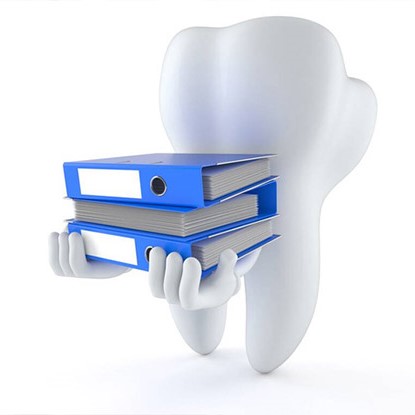(ADA) Dental Claim Form - All You Need to Know
Discover the key components of the ADA dental claim form and unlock efficient claims processing. Simplify dental billing procedures with our comprehensive guide.

Discover the key components of the ADA dental claim form and unlock efficient claims processing. Simplify dental billing procedures with our comprehensive guide.

As someone who relies on dental insurance to make dental care affordable, filling out and submitting dental claims may seem like a tedious task. However, this is where the American Dental Association (ADA) Dental Claim Form comes in handy.
The ADA Dental Claim Form is the standard form used by dental healthcare providers for submitting insurance claims for dental services provided. Understanding how to fill in the form, the information required, and the codes used is essential to successful dental claims processing.
In this guide, we will walk you through everything you need to know about the ADA Dental Claim Form.
Tired of the hassle of filling out ADA Dental Claim Forms manually? Discover how Artsyl ClaimAction can simplify the process, reduce errors, and expedite reimbursement. Optimize your dental
claims processing today!
Book a demo now
The ADA Dental Claim Form, often referred to as the ADA 2012 form, is a standardized document used by dental offices and insurance companies for billing and processing dental claims. It is created and maintained by the American Dental Association (ADA).
This form serves as a universal tool for dental practitioners to submit claims for reimbursement to dental insurance providers. It includes sections for detailing patient information, treatment provided, diagnosis codes, procedure codes, and the costs associated with dental services. Dental offices complete the form with the relevant information and submit it to insurance companies for reimbursement.
The ADA Dental Claim Form helps streamline the claims process by providing a standardized format that insurance companies can easily process. It ensures clarity and consistency in billing procedures and helps dental practitioners receive payment for services rendered to patients with dental insurance coverage.
Don’t waste your time on tedious paperwork and welcome newfound efficiency. With Artsyl ClaimAction, processing ADA Dental Claim Forms becomes a breeze. Unlock faster reimbursements and enhanced practice productivity.
Book a demo now
The ADA Dental Claim Form, also known as the ADA 2012 form, is a standardized document used for submitting dental insurance claims. It consists of many parts, each serving a specific purpose. Here’s an overview of the different parts of the ADA Dental Claim Form:
Part A: ADA Claim Form Information: This section contains general information about the form, such as its title, revision date, and the ADA’s copyright notice.
Part B: Billing Provider Information and National Provider Identifier (NPI): In this section, the billing dental provider (dentist or dental office) provides their contact information, including the NPI, which is a unique identifier for healthcare providers.
Part C: Patient Information: This part collects essential information about the patient, including their name, date of birth, gender, address, and contact details.
Part D: Subscriber Information: If the patient is covered by dental insurance, this section captures information about the subscriber (the policyholder), including their name, date of birth, and relationship to the patient.
Part E: Other Dental or Medical Insurance Information: If the patient has additional dental or medical insurance coverage, this section collects details about those plans, including policy numbers and group numbers.
Part F: Dental Procedures: The heart of the form, this section lists the dental procedures performed, including diagnosis codes (ICD-10), procedure codes (CDT codes), tooth numbers, and descriptions of the services rendered.
Part G: Dental Laboratory Procedures: If dental laboratory services were required for the treatment, this section captures information about those procedures.
RELATED: Medical Claims Processing with ClaimAction
Part H: Predetermination or Prior Authorization: If predetermination or prior authorization is required by the insurance company, this section documents the submission of these requests.
Part I: Diagnostic Information: In this part, any diagnostic information related to the dental procedures is provided, such as X-rays or study models.
Part J: Total Charge: This section calculates the total charges for the dental services provided, including any fees for materials, laboratory work, and additional services.
Part K: Amount Paid: If any payments have already been made towards the dental services, such as a down payment, it’s documented in this section.
Part L: Provider’s Certification and Signature: The dental provider signs and certifies the claim form, confirming the accuracy of the information provided.
Part M: Remarks: Any additional remarks, explanations, or notes can be included in this section.
Part N: Provider’s NPI: The provider’s NPI is reiterated in this section for clarity.
Understanding the different parts of the ADA Dental Claim Form is essential for accurate and efficient dental insurance billing and claims processing. Each section serves a specific purpose in documenting the patient’s treatment and facilitating reimbursement from insurance providers.
Accuracy matters when it comes to dental claims. Artsyl ClaimAction’s intelligent data capture ensures precision, reducing the risk of claim rejections. Elevate your claims processing game today!
Book a demo now
To indicate each dental service rendered, the ADA Dental Claim Form uses codes. These codes are essential to dental claims processing, speeding up reimbursement and ensuring accuracy of pricing.
The ADA uses a standardized coding system, Current Dental Terminology (CDT) codes, to describe dental procedures and services.
Each dental service is assigned a unique five-digit CDT code, and by using these codes, the dental insurance company knows exactly what procedures were performed and can pay out correctly.
In the ADA Dental Claim Form, procedure codes are used to describe the dental treatments and services provided to a patient. These codes help standardize and categorize the various dental procedures for billing and insurance purposes.
The procedure codes used in the ADA Dental Claim Form are known as Current Dental Terminology (CDT) codes. These codes are developed and maintained by the American Dental Association (ADA).
Here are some examples of CDT codes:
D0120 — Periodic Oral Evaluation: This code is used for a routine dental check-up and evaluation.
D1110 — Prophylaxis (cleaning) Adult: It represents a regular dental cleaning for an adult patient.
D2140 — Amalgam (silver) filling, one surface, primary or permanent: This code is used for a single-surface silver amalgam filling.
D2950 — Core buildup, including any pins: It indicates the construction of a core foundation for a dental restoration.
D5110 — Complete denture — maxillary: This code represents the creation of a full upper denture.
D7140 — Extraction, erupted tooth or exposed root (elevation and/or forceps removal): It is used for the extraction of a tooth that is fully erupted.
D9310 — Consultation: This code is for a dental consultation, which may include an examination and discussion of treatment options.
D9999 — Unspecified adjunctive procedure, by report: This code is used when a specific procedure does not have a designated CDT code, and additional details are provided in the report.
These are just a few examples of CDT codes that are used in the ADA Dental Claim Form. Each code corresponds to a specific dental procedure, allowing dental practitioners to accurately document the services provided to patients for insurance billing and reimbursement purposes.
It’s essential for dental professionals to use the appropriate codes to ensure accurate and efficient claims processing.
Timeliness is key in medical claims processing. Artsyl ClaimAction’s automate medical and dental claims and ensuring you never miss a submission deadline. Take control of your dental
claim processing now!
Book a demo now
The tooth system on a dental claim form refers to the method used to identify and specify individual teeth when documenting dental procedures.
In dental practice, teeth are numbered and labeled using a standardized system to ensure clarity and precision in dental records and claims.
The tooth numbering system commonly used in dental claim forms is the Universal Numbering System, which assigns a unique number to each tooth in the mouth.
In the Universal Numbering System:
Each tooth in the mouth is assigned a specific number according to its position, with the upper arch (maxilla) numbered from 1 to 16 and the lower arch (mandible) numbered from 17 to 32.
Dental practitioners use this numbering system to indicate which teeth are involved when documenting dental procedures and treatment on the dental claim form. This helps insurance providers and dental professionals accurately understand and communicate the specific dental work performed on a patient’s teeth.
Filling out the ADA Dental Claim Form accurately is essential for effective billing and insurance claims processing. Here’s a step-by-step guide on how to properly complete the form:

RELATED: Intelligent Automation for Handling Claims
It’s important to double-check all the information for accuracy before submitting the form. Using the correct Current Dental Terminology (CDT) codes for procedures is crucial to prevent claim processing delays.
Additionally, keeping copies of the completed form and any supporting documents is advisable for record-keeping purposes. Properly filled out forms help streamline the claims process and ensure timely reimbursement for dental services.
Successfully completing the ADA Dental Claim Form requires understanding the information required, dental codes, and attention to detail.
Looking for a comprehensive solution to streamline your dental claims workflow? Artsyl ClaimAction offers end-to-end management, from data capture to submission, enabling you to focus on patient care.
Book a demo now
Filling out the ADA Dental Claim Form accurately is crucial to ensure smooth claims processing and timely reimbursement for dental services. To help you avoid common mistakes, here are some errors to watch out for when completing the form:
By avoiding these common mistakes when filling out the ADA Dental Claim Form, dental practitioners can improve claims accuracy, reduce processing time, and enhance the overall efficiency of their billing and reimbursement processes.

Artsyl ClaimAction simplifies the process of dental claim forms, allowing you to organize, store, and retrieve crucial data effortlessly.
Automating dental claim processing involves leveraging technology to streamline the entire process. Key steps include:
For automating these steps, you can use ClaimAction software that significantly enhance the efficiency, accuracy, and speed of dental claim processing, ultimately leading to improved revenue cycle management for dental practices.
ClaimAction offers advanced Optical Character Recognition (OCR) capabilities to accurately extract data from claim forms. The system also supports data capture, data validation and integration with practice management or billing software. With ClaimAction, you can set up rules for automated routing and adjudication, ensuring claims are processed efficiently.
Furthermore, ClaimAction allows handling exceptions and offers robust reporting and analytics for performance insights.
By incorporating ClaimAction into your dental claim processing workflow, you can achieve a seamless and efficient process while ensuring compliance with industry regulations and data security standards.
Submitting claims for dental services requires attention to detail, understanding, and proper utilization of the ADA Dental Claim Form. The more you comprehend the form, the easier and faster claims processing becomes.

With this guide, filling out the ADA Dental Claim Form is simpler than ever before. From understanding the different parts of the form to dental codes and common mistakes to avoid, this guide helps ensure you are informed and on the right track.
Submitting error-free and precise dental claims reduces claim denial risks, making dental healthcare more accessible and affordable for everyone.
The American Dental Association (ADA) is a professional association of dentists in the United States. It was founded in 1859 and is one of the oldest and largest dental organizations globally. It serves as a collective voice for dentistry, representing over 161,000 members, including dentists, dental students, and other dental professionals. The American Dental Association is a leading advocate for oral health, promoting dental education, research, and the advancement of ethical dental practices. The ADA establishes guidelines and standards for dental care, provides resources for dental professionals, and advocates for policies that enhance oral health across the nation. The association plays a key role in accrediting dental education programs and supporting initiatives to improve access to dental care for the public.
Furthermore, the ADA is known for its role in establishing the Current Dental Terminology (CDT) code set, which standardizes codes used to report dental procedures and services for billing and insurance purposes. This coding system helps streamline communication between dental professionals, insurance companies, and other stakeholders in the healthcare system.
The ADA Dental Claim Form is essential for accurate and efficient claims processing. It provides a structured format for documenting dental procedures, diagnosis codes, and other essential information required for insurance reimbursement.
Dental practitioners can typically obtain a copy of the ADA Dental Claim Form from dental supply companies, dental associations, or dental software providers. It may also be available for download from the ADA’s official website.
The form should include patient information, provider details, diagnosis codes (ICD-10), procedure codes (CDT codes), tooth numbers, service descriptions, total charges, and the provider’s signature, among other information.

CDT codes, or Current Dental Terminology codes, are standardized codes used to describe dental procedures. Dental practitioners should select the CDT codes that best represent the services provided. The ADA provides guidelines for CDT code selection.
Diagnosis codes, often referred to as ICD-10 codes, are used to indicate the medical necessity of dental procedures. They describe the patient’s dental condition or reason for treatment.
Yes, common mistakes include inaccurate patient information, incomplete provider information, incorrect procedure codes, missing diagnosis codes, and failing to sign and certify the form. Timely submission and follow-up are also crucial.
The processing time for dental insurance claims varies depending on the insurance provider and the complexity of the claim. Typically, it can take several weeks to receive reimbursement.
Many dental offices use electronic claims submission methods to expedite the process. Electronic submissions can be faster and more efficient than paper submissions.
If your dental claim is denied or rejected, review the reason for the denial provided by the insurance company. You may need to make corrections or provide additional documentation before resubmitting the claim.
These FAQs provide a basic understanding of the ADA Dental Claim Form and its role in dental claims processing. Dental practitioners should familiarize themselves with the form’s guidelines to ensure accurate and timely claims submission.
Make data-driven decisions for your dental practice. Artsyl ClaimAction provides insightful analytics, helping you identify trends, optimize billing, and improve practice profitability. Harness the power of data today!
Book a demo now
Along with the dental claim form, several other common medical claims forms exist in healthcare and insurance billing, each fulfilling distinct purposes and supporting precise documentation. Notable among them are the CMS 1500/HCFA (Healthcare Financing Administration) and CMS 1450/UB-04 forms:
Related: What Is HCFA in Medical Billing?
Related: UB04 and UB92 Forms in Medical Billing
Role in Healthcare and Insurance Billing:

Contact Us for an in-depth
product tour!
ClaimAction: